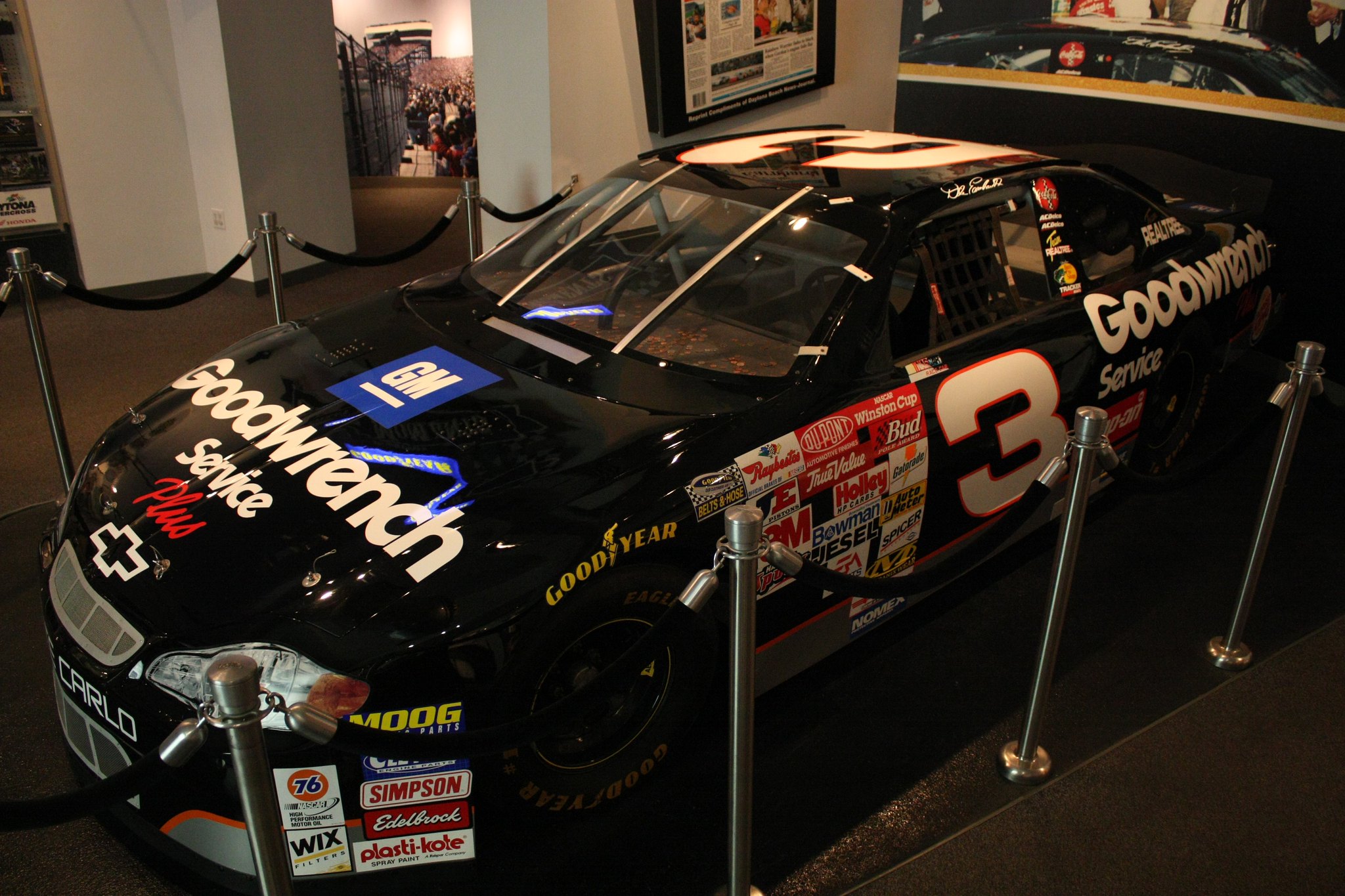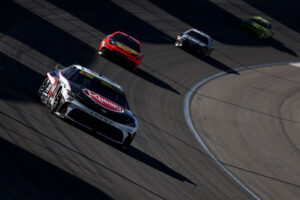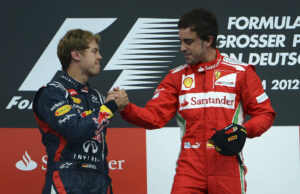In the tapestry of NASCAR‘s history, few threads are as poignant as the story of Dale Earnhardt’s legacy. His name evokes not only triumphs on the track but also serves as a somber reminder of the inherent risks that accompany the pursuit of speed. The day Earnhardt’s black No. 3 car crossed the finish line for the last time marked a watershed moment in motorsport. The echoes of his untimely departure reverberated far beyond the confines of the racetrack, igniting a fervent call to action within the NASCAR community.
February 18, 2001, etched itself into the annals of racing lore as the day the sport lost one of its brightest stars. Dale Earnhardt’s fatal crash during the final lap of the Daytona 500 sent shockwaves through the racing world, shattering the illusion of invincibility that often accompanies the bravado of speed. The collective grief felt by fans, drivers, and officials alike served as a stark reminder of the fragility of life in the fast lane.
In the wake of Earnhardt’s tragic accident, NASCAR found itself at a crossroads. The loss of the ‘Intimidator’ prompted soul-searching within the organization, forcing a reevaluation of safety standards and practices. Earnhardt’s legacy became a rallying cry for change, compelling NASCAR to embark on a journey of innovation and introspection.
The sport’s response to his passing would not only redefine its commitment to driver safety but also lay the groundwork for a new era of technological advancements and cultural shifts. Similarly, the entertainment industry continually seeks to innovate, with experiences like the Majestic Winter Slot Demo offering users new ways to engage with digital landscapes, reflecting the universal pursuit of advancement and the embrace of technology.
The Pre-Earnhardt Era: Safety in NASCAR
Before the tragic loss of Dale Earnhardt in 2001, NASCAR operated within a vastly different safety landscape. During that era safety innovations were less prevalent, and the focus of the sport was primarily on speed and spectacle rather than driver protection. Seatbelts and roll cages were standard features in race cars, but advancements in safety technology were relatively modest compared to today’s standards. The absence of mandatory head-and-neck restraints and the limited use of impact-absorbing barriers left drivers vulnerable to the inherent dangers of high-speed collisions.
Drivers of the pre-Earnhardt era confronted numerous challenges when it came to safety. The rigid construction of race cars often exacerbated injuries during crashes, while outdated track infrastructure provided minimal protection in the event of an accident. Furthermore, the prevailing culture within NASCAR prioritized competition over safety, leading drivers to accept significant risks as an inherent part of their profession. Officials, too, faced hurdles in implementing comprehensive safety measures, as resistance to change and a lack of technological resources hindered progress.
Dale Earnhardt’s Enduring Legacy as the Catalyst for Change
The tragic loss of Dale Earnhardt on February 18, 2001, sent shockwaves reverberating throughout the NASCAR community, forever altering the trajectory of the sport. Earnhardt wasn’t just a driver, he was an emblem of grit, determination, and the unwavering spirit of competition. His sudden departure left a void that could never be filled, casting a somber shadow over the world of racing.
Earnhardt’s passing was a loss for NASCAR and a loss for everyone who had ever been touched by the roar of the engines and the thrill of the chase. The racing world mourned as one, grappling with the realization that even the greatest among them were not immune to the dangers of the track.
In the aftermath of the tragic accident, the NASCAR community rallied together with a newfound sense of purpose. No longer could safety be an afterthought it had to be a top priority. Earnhardt’s death served as a wake-up call, prompting drivers, officials, and fans alike to demand change. The outcry for enhanced safety measures was deafening, compelling NASCAR to take decisive action to protect the lives of its competitors. What followed was a revolution in safety innovation that would shape the future of the sport for generations to come.
Redefining Safety: NASCAR’s Swift Action Post-Earnhardt
After 2001, NASCAR embarked on a comprehensive mission to fortify safety measures and protect its drivers from the inherent risks of the sport. This immediate response included the deployment of SAFER barriers and the mandatory adoption of head-and-neck restraints, among other critical changes.
The collective response of NASCAR and its stakeholders heralded a new era of safety in motorsport, characterized by an unwavering commitment to continuous innovation. Just as NASCAR’s community has sought to learn more and adapt in the wake of challenges, enthusiasts of online entertainment have similar opportunities to explore and understand the evolving landscape.
For those interested in the digital realm, learning more about offerings such as free spins can enhance their online experience, mirroring the way NASCAR has evolved by embracing new technologies and safety measures. Concurrently, NASCAR implemented a series of other critical changes in protocols and equipment to bolster safety standards.
Among these changes was the mandatory adoption of head-and-neck restraints, such as the HANS device, to mitigate the risk of head and neck injuries during accidents. Moreover, enhancements were made to car construction and design, emphasizing the reinforcement of structural integrity and the integration of additional safety features to safeguard drivers. The collective response of NASCAR and its stakeholders heralded a new era of safety in motorsport, one characterized by unwavering commitment and continuous innovation.
The Car of Tomorrow: Revolutionizing Car Construction in NASCAR
The inception of the Car of Tomorrow (COT) marked a paradigm shift in NASCAR’s approach to vehicle design, with a renewed emphasis on driver safety. The COT introduced a host of innovative safety features meticulously integrated into its construction, aimed at enhancing driver protection and mitigating the risk of injuries in high-speed crashes. Among the notable safety advancements incorporated into the COT were energy-absorbing foam panels strategically placed within the chassis to dissipate crash forces and reduce the impact on drivers.
Additionally, reinforced roll cages provided an extra layer of structural integrity, ensuring enhanced protection in the event of rollovers or collisions. Cockpit surrounds were also introduced to fortify the driver’s compartment, offering increased safety in side and rear impacts.
All these innovative safety enhancements, combined with other modifications such as improved roof flaps and strengthened roof designs, solidified the COT as one of the safest and most advanced race cars in NASCAR’s history. Despite initial challenges and skepticism surrounding its introduction, the COT’s legacy as a pioneering force in NASCAR safety innovation remains undeniable, setting the stage for further advancements and shaping the evolution of safety standards in the sport.
The Next Gen Car: Pioneering Safety in NASCAR
With the introduction of the Next Gen car, NASCAR enters a new era defined by cutting-edge safety standards and innovative design. This revolutionary vehicle is equipped with a suite of advanced safety features engineered to enhance driver protection and mitigate the risk of injuries on the track. The Next Gen car’s safety arsenal includes:
|
Safety Feature |
Description |
|
Carbon Fiber Composite Body |
Utilizing lightweight yet resilient materials, the Next Gen car’s carbon fiber composite body enhances crashworthiness while reducing overall weight, improving driver safety and vehicle performance simultaneously. |
|
Crash-Resistant Fuel Cell |
Featuring a reinforced fuel cell design, the Next Gen car minimizes the risk of fuel leakage and fire hazards during crashes, prioritizing driver safety in high-stakes situations. |
|
Impact-Absorbing Bumpers |
Engineered to absorb and dissipate crash forces, the Next Gen car’s impact-absorbing bumpers minimize the severity of impacts on drivers, enhancing overall safety on the track. |
|
Biometric Data Monitoring System |
The Next Gen car’s state-of-the-art biometric data monitoring system continuously tracks drivers’ vital signs during races, providing crucial real-time data to medical personnel in the event of emergencies, and ensuring prompt and effective medical response. |
Perspectives from Safety Experts
As NASCAR continues to push the boundaries of safety innovation, the insights from safety experts provide a critical perspective on the delicate balance between speed, competition, and safety. Balancing these elements presents a myriad of challenges, from ensuring optimal performance on the track to safeguarding the well-being of drivers in the event of accidents. Through collaborative efforts and innovative solutions, safety experts strive to address these challenges while maintaining the integrity and excitement of NASCAR racing. Key considerations in this endeavor include:
- Developing advanced safety technologies that enhance driver protection without compromising performance.
- Implementing comprehensive safety protocols and procedures to minimize the risk of accidents and injuries during races.
- Conducting rigorous research and testing to validate the effectiveness of safety innovations and identify areas for improvement.
- Collaborating with drivers, teams, and industry stakeholders to integrate feedback and ensure that safety measures align with the evolving needs of the sport.
Through a combination of innovation, collaboration, and dedication, safety experts play a pivotal role in shaping the evolution of NASCAR safety standards, ultimately contributing to a safer and more sustainable future for the sport.
Conclusion
It’s evident that the sport has undergone a remarkable transformation over the years. From the tragic loss of Dale Earnhardt to the cutting-edge safety technologies of today, NASCAR has continuously evolved to prioritize the safety and well-being of its drivers, teams, and fans. Reflecting on this evolution, we recognize the progress made in enhancing safety standards and reducing the risks inherent in high-speed racing. However, as we peer into the future, we must remain vigilant in the face of new challenges and emerging trends in motorsport safety.
The path ahead is paved with opportunities for innovation and collaboration, from the integration of advanced vehicle technologies to the implementation of comprehensive safety protocols. Yet, as the sport continues to evolve, it’s essential to navigate these challenges with a steadfast commitment to safety and a dedication to pushing the boundaries of what’s possible. By embracing the spirit of innovation and collaboration, NASCAR is well-positioned to lead the way in shaping the future of motorsport safety and ensuring a safer, more secure racing environment for all.






